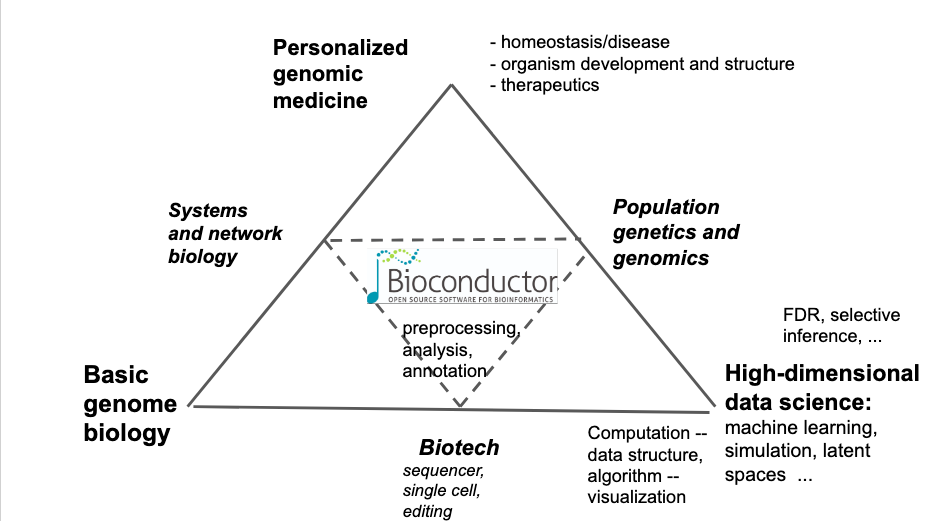Consider the following schematic of topics arising in genomic data science.

This diagram was constructed as preparation for a curriculum on statistical methods for functional genomics to be offered in the summer of 2020 at Cold Spring Harbor Laboratory (canceled).
The aim is to take students who are primarily concerned with experimental methods of basic genome biology (bottom left corner), and build their expertise up towards the apex of the triangle, so that they are better equipped to use data science to pose and answer broad questions about organism structure and development, homeostasis and disease.
This process inevitably leads through biotechnological innovation that generates high-dimensional data. Thus students must travel along the bottom edge of the triangle in addition to moving up. They must complement their basic science methods and knowledge by staying abreast of newest developments in systems and network biology, to ascend along the left edge of the triangle. Applications to genomic medicine require understanding of the methods and findings of population genetics, requiring travel up the right edge of the triangle.
We place Bioconductor at the triangle’s center as the fundamental locus of computational resources to enable ascent. For two decades, Bioconductor has facilitated the parsing and modeling of genome-scale experimental data, providing rational high-level access to annotated, interpretable data at the level of genome, transcriptome, or base-pair. By blending these data models with R, state-of-the-art methods of visualization and statistical inference are immediately available to Bioconductor users. Resources for pathway and network annotation are also readily available for amalgamation with experimental readouts. In two weeks’ time, instructors in the Cold Spring Harbor course introduce working biologists to functional programming, software package use, session management, reproducible research methods, and various aspects of statistical learning, typically adapted directly to the specific experimental modalities of interest to the student.